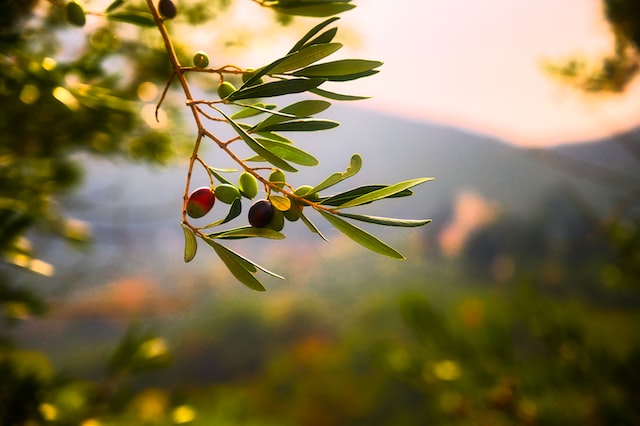
A Mixed Result for Australian Olive Harvest
The 2022 olive harvest is wrapping up and it’s been a mixed result for growers across Australia.
Because of the biennial cycle of olives, 2022 was, as expected, a lower crop year, however it was not as low as the previous ‘off’ year in 2020.
While there is no official tracking of the Australian olive oil harvest and farmgate sales, the Australian Olive Oil Association (AOOA) estimates the 2022 harvest will yield 14-15million litres of olive oil, compared to last year’s bumper crop of 20-22 million litres, but around 50% higher than 2020.
The 2022 Australian crop is likely valued in the range of $90-$110M in wholesale/bulk farmgate value.
President of AOOA, David Valmorbida said the harvest varied across Australia, depending on weather conditions.
“Volumes were down considerably on the east coast and in some areas the profile of the oil produced has been milder in flavour than normal, partly as a result of the impact of weather conditions on the olives; more rain and less sunshine. Heavy rains and wet groves have not only damaged fruit, but hindered the ability for farmers to use heavy machinery to harvest the fruit.”
CEO of the Olive Centre, Amanda Bailey said that “Some states have certainly done it tougher than others.”
“There has been virtually no production in the Hunter Valley where there were environmental issues at the time of flowering, so the trees didn’t produce fruit, while other parts of NSW have had better yields.
“Parts of Western Australia produced an exceptional crop and Tasmania had a strong season with larger producers recording a bumper crop. Oil yield was excellent as well,” Ms Bailey added.
Australia’s largest producer, Cobram Estate, is the main driver of volumes in Victoria and estimated a crop of approximately 9.5 million litres, down from 16 million litres in 2021.
In South Australia, 2022 has been a tight season, with volumes down from previous years and some farmers reportedly unable to harvest as they would normally.
“However, overall, the olive harvest wasn’t too bad, considering this was an ‘off’ year in the cycle. For growers who produced a strong crop, the oil quality was excellent and pungent in character,” Ms Bailey said.
Demand for Australian olive oil remains strong and that is reflected in the price, with growers earning between $5.50 to $6.50 per litre for larger commercial volumes of extra virgin olive oil at the farm gate, with higher prices for smaller, higher-quality or organic batches of oil. Growers face other challenges with rising costs of packaging, fuel, fertiliser and electricity. Supply chain issues are also affecting the industry; notably a world-wide shortage of bottles and tin cans needed for production.
“The good news is that demand for olive oil from consumers remains strong,” David Valmorbida said. “Overall, consumption of olive oil is up 5% in Australia, with more people using olive oil at home.
“Cooking at home increased markedly during the pandemic and demand for olive oil increased. Post lockdown demand for olive oil has remained strong, which is excellent for the industry.
“We know from our research that consumers buy olive oil because of its health benefits, and its taste, but the price of olive oil is a factor for buyers.
“The challenge for olive oil brands is to ensure olive oil stays on the shopping list as the cost of grocery items increases and inflation ramps up,” David Valmorbida said.
Despite a smaller crop in 2022, Australian producers will be buoyed by continued strong pricing, underpinned by a global shortage of olive oil.
The outbreak of the war in Ukraine, which lead to an immediate global shortage of sunflower oil, inevitably triggered increased demand for olive oil as the supply of vegetable and seed oils dried up and prices approached levels close to that of olive oil.
“We haven’t seen a situation like this before”, Mr Valmorbida said. “The Mediterranean olive harvest concluded in early 2022 and was modest, sustaining higher-than-average farmgate prices around $4.65 per litre in Spain and $5.70 per litre in Italy, the largest producers of olive oil in the world. However, the demand caused by the war in Ukraine has been further compounded by record heat waves across Europe during June and July, causing the price of olive oil to increase to near record highs; as much as $5.50 per litre in Spain and $6.50 per litre in Italy, and still climbing.
“The outlook for the 2022/23 Mediterranean crop, which begins in October, looks increasingly pessimistic, triggering a possible multi-year global shortage of olive oil as reserve stocks run out. In addition, European farmers are suffering from similar increases in the cost of labour, fertiliser, and other inputs, as well as major increases in shipping costs for export, causing a further increase in the delivered cost of olive oil.
“While this is bad news for consumers of olive oil, it could be a positive for Australian olive farmers, who will continue to benefit from high market prices of imported olive oil for the foreseeable future. Hopefully, this will underpin and reinforce much-needed further investment in olive grove expansion in Australia,” Mr Valmorbida said.
The Australian Olive Oil Association is a not-for-profit, independent body focused on the quality of olive oil, the promotion of olive oil usage and fair competition within the industry. Membership is open to producers, distributors, interested stakeholders and industry-related bodies.
For nearly 30 years, AOOA has been a signatory to the global quality control program of the International Olive Council (IOC). AOOA coordinates the annual testing program of leading olive oil brands by independent laboratories. All AOOA members agree to abide by the IOC standard. AOOA also manages the AOOA Certified Quality Seal Program, which involves an even higher standard of quality monitoring, and allows products marketed by AOOA members to stand out.
For more information:
Jan Jacklin, General Manager, Australian Olive Oil Association
0417533281
gm@aooa.com.au